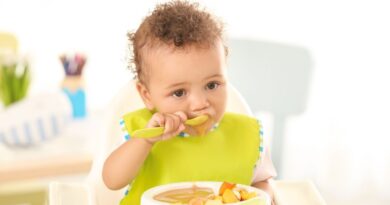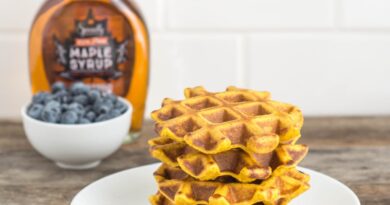25 healthy baby toast ideas for breakfast, lunch or dinner
Avo toast is such a popular food for adults these days and it’s also really healthy for babies. Here’s 25 baby toast ideas to nourish your little one.
I love toast as a finger food for babies and toddlers, it’s really quick for busy parents to make and can be super nutritious too.

Why weaning is a big milestone
Weaning is a milestone marking the transition from a milk-only diet to the inclusion of solid foods, and toast can absolutely be part of that.
It’s a time of exploration and learning, but it’s also a time when their nutritional needs change and milk alone no longer supplies enough nutrition.
A lot of people think that ‘food before one is just for fun’ but this is so wrong. It should be fun but it’s so much more important than that.
Babies need protein for growth, carbohydrates for energy, and fats for brain development. Vitamins and minerals are also crucial, such as iron for healthy blood cell production to carry oxygen to their developing brain and calcium for growing bones.
And toast along with a variety of different toppings can supply all of that.

Is toast a suitable weaning food?
Yes! Toast is a fantastic weaning food.
It’s easy for little hands to hold, can be topped with a variety of nutritious foods, and helps babies learn to chew and manage different textures.
By choosing the right bread and its topping, you can turn a simple slice of toast into a nutrient-packed meal.
Remember that variety is key in preventing fussy eating habits and ensuring your baby gets a wide range of nutrients, so switch up your toast toppers, there are 25 ideas at the end of this blog.
When can babies be offered toast?
Babies can be offered toast from six months old, as part of their weaning journey. It’s a great introduction to finger foods.

Can your baby eat toast if they don’t have any teeth?
Yes, even if your baby doesn’t have teeth yet, they can gum the toast, which softens it with saliva, making it easier to swallow

Can your baby have toast everyday?
While toast can be a part of your baby’s diet, it shouldn’t be offered every day due to its salt content. Their kidneys can’t handle much salt yet.
Therefore bread should be switched with other foods to ensure they don’t overdo it on the salt, and also to ensure a range of different nutrients are eaten.
Is toast a choking hazard?
If prepared correctly, toast is not a choking hazard.
It should be toasted well and cut into appropriate shapes for your baby’s age and development.
The type of bread can also make a difference. Wholemeal bread, for example, has a firmer texture than white bread, which can make it easier for babies to move around their mouths and less likely to pose a choking risk.
Always supervise your baby while they’re eating to ensure safety.

Is toast an allergen?
Toast itself is not an allergen, but the ingredients in bread can be.
The most common allergens in bread are gluten and wheat. Gluten is a protein found in wheat, barley, and rye. Wheat is a grain that is one of the top eight food allergens.
There is a specific way to introduce allergens to your baby, especially if they are at high risk.
Start by offering a small amount of the allergenic food (like toast) and wait to see if there are any reactions. If there are no adverse reactions, you can gradually increase the amount over time.
Always introduce one new allergen at a time and wait a few days before introducing another so you can accurately identify any potential allergies.
Symptoms of a food allergy can range from mild (like hives or a rash) to severe (like difficulty breathing).

Why toast for babies is a great option?
Toast, especially when it’s made from whole grain bread, provides essential nutrients like fibre, B vitamins, and iron.
The toppings you choose will further enhance the nutritional value. For instance, avocado provides healthy fats, mashed bananas offer potassium, and nut butters supply protein.
These nutrients are all important for your baby’s growth and development during the weaning stage.
Toast is perfect for both traditional and baby-led weaning.
Whichever method you choose, mash the toppings and spread them on the toast..
The texture of toast is a good one for development of safe swallowing skills.
This is important as it encourages babies to move foods around their mouths, chew (even if they don’t have teeth yet) and form a bolus soft enough to swallow.
When you introduce different textures early on, it can also help prepare your baby for eating a variety of new foods as they grow. It’s believed the window of opportunity for introducing textures closes at around 10 months!

How to choose the right bread for your baby
Choosing the right bread for your baby involves considering several factors:
Nutritional Content:
Wholemeal bread is a healthier choice than white bread because it contains more fibre, which aids digestion. However, all breads contain some level of salt (it’s essential for the proving process), so it’s essential to check the nutritional information. Aim for breads with the lowest salt content.
Frequency:
Due to the salt content in bread, it’s not recommended to serve bread or toast every day. Variety is key in a baby’s diet to ensure they get a range of nutrients.
Type of Bread:
Wholemeal, white, bread with bits, rye bread, and sourdough are all suitable options. Wholemeal bread can be easier for babies to manage at the start of weaning due to its firmer texture.
Store-Bought or Homemade:
Both are fine. Store-bought bread is convenient and can be a good option, especially if it’s lower in salt and sugar. However, if you prefer to bake your own bread, you can control exactly what goes into it.
Gluten:
Gluten is found in many types of bread and is generally fine for babies unless they have celiac disease or a gluten intolerance. Always consult a Registered Dietitian if you have concerns about introducing gluten to your baby’s diet and are thinking of raising them gluten free. Done incorrectly can mean they miss out on certain nutrients.

Preparing baby-safe toast
Preparing toast for your baby involves a few simple steps:
Toasting Technique:
Toast the bread until it’s golden brown. Avoid over-toasting as this can make the bread too hard for your baby to gum or chew.
Cutting the Toast:
The shape and size of the toast pieces should change as your baby grows:
6-9 months +:
Cut the toast into long, thin strips that your baby can easily grab with their fist.
9-12 months:
As your baby’s pincer grasp develops, you can start offering smaller, bite-sized pieces.
12 months +:
At this stage, continue with bite-sized pieces, but you can also introduce larger pieces to encourage self-feeding.
Toddlers:
By now, your toddler can handle regular-sized pieces of toast.
Testing Temperature:
- Always check the temperature of the toast and any toppings before giving it to your baby. It should be cool enough to touch.
Supervision:
- Never leave your baby alone while they’re eating. Always stay with them to ensure they’re safe and to intervene quickly if they start to choke.

How to choose a great baby toast topper
Nut butters like almond, cashew, or peanut butter are a great source of healthy fats and protein. Spread a thin layer on the toast to avoid choking hazards. Remember, smooth is best for babies – avoid crunchy versions as mixed textures can be difficult for them to manage.

25 Easy and nutritious toast topper ideas
Here are my favourite nutritious toast topper ideas suitable for weaning babies, toddlers and parents too!
- Avocado mashed with the back of a fork and spread like butter
- Mashed bananas spread on toast with a sprinkle of cinnamon
- Pureed vegetables like my sweet potato and chickpea puree, yum!
- Hummus, both shop bought or homemade are perfect
- Almond butter with smushed raspberries
- Mashed raspberries stirred through Skyr or Greek yoghurt
- Scrambled eggs and toast
- Tuna and mayo spread like a pate on toast
- Cottage cheese and pineapple
- Melted cheese on toast, a few chopped spring onions and cherry tomatoes mixed through the cheese before you grill it is lovely too
- Peanut butter and banana mash, this is so delicious!
- Pureed peas and edamame beans – simple cook whizz in a blender before spreading
- Coronation chicken, just whizz up cooked chicken, natural yoghurt and some curry powder and spread on toast. Yum!
- Mashed sweet potato, simple!
- Mashed canned salmon
- Banana and Greek yoghurt
- Ricotta cheese with a squeeze of lemon juice
- Mashed chickpeas
- Mashed pears, peel them first
- Pureed mango with ginger
- Mashed hard boiled egg
- Pesto and cream cheese mixed together
- Cream cheese and a fruit puree like prune puree – handy if your baby is prone to constipation
- Baked beans on toast look for low sugar, low salt or make your own!
- Mashed mackerel and mayo
Enjoy exploring these healthy toast ideas with your little one!

The post 25 healthy baby toast ideas for breakfast, lunch or dinner appeared first on The Children's Nutritionist.




